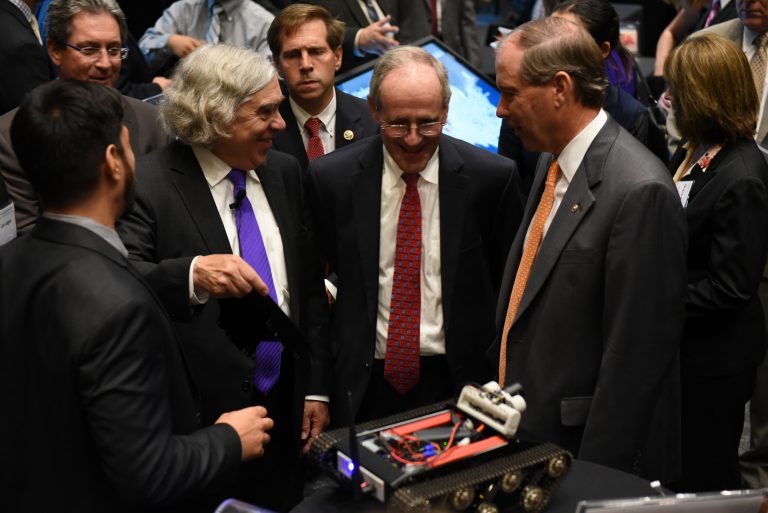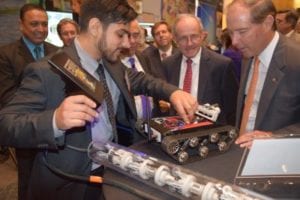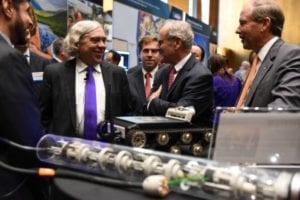Gene Yllanes is an undergraduate student studying electrical engineering in the College of Engineering & Computing. Below is his first-person account of briefing U.S. Secretary of Energy Ernest Moniz at Capitol Hill.

By Gene Yllanes
Coming from a family of 15 kids, I never expected any financial support when I went to college. I had to work to survive and I found that I could make money by repairing broken cellphones out of my college dorm. I had no idea what degree I wanted to pursue, how I would pay for classes, or that, years later, I would be briefing the U.S. Secretary of Energy Ernest Moniz on my work with electronics.

My interest in electronics propelled me toward a degree in electrical engineering and it was in the College of Engineering and Computing where I received a position at the Applied Research Center (ARC) as a Department of Energy (DOE) fellow. The research at ARC for the DOE Office of Environmental Management is focused on developing new tools and techniques for the environmental remediation of radioactive facilities across the country. Working at ARC gives me the opportunity to practice the things that I learn in class and apply the tools that I have been taught. For me, I have found these hands-on activities to be the best way to learn.
Working with mentor Anthony Abahão, I have had the opportunity to design the power and control systems for a wireless inspection tank. This tank is designed to traverse highly radioactive environments in order to provide video feedback, temperature data and to deploy other robotic sensors. When the principal investigator of the DOE-FIU Cooperative Agreement Leonel Lagos was invited to bring a DOE fellow to present at the National Lab Day on the Hill, I was given the chance to represent the robotics department and the DOE Fellows Program.
National Lab Day on the Hill is an event that was initiated by President Obama to showcase the technologies being developed across the country within the DOE National Labs. Since ARC is funded by the Office of Environmental Management within DOE, we were asked to present some of the research that we have done here at FIU as part of the event.
Truly, I had no idea that I would ever be flown up to Washington, D.C, much less to present research to the head of the DOE. I merely focused on understanding what was in front of me and seeing the practicality of it; I found a way to employ my curiosity and made the most of the opportunities presented to me.

We were told that we would have about 30 seconds to present to the Secretary, so Lagos and I had prepared a short speech to deliver. When all was said and done though, we ended up spending much more time with Moniz. We were able to show him and senators what was under the hood of the wireless inspection tank and discuss the DOE Fellows Program. He was amused that we had applied the FIU logo to the top of the robot.
At one point, I had the opportunity to ask the Secretary, “In 20 years, what do you think will be the biggest challenges we face?” His answer still resonates with me now. He said, “Gene, we have no idea where we will be in the next 20 years. The best advice I can give you is to seek out challenging problems and to never lose the energy in solving them.”
It was a rewarding experience to be among such engaging and influential people. I remember waiting eagerly to present and thinking, “Experiences like this will stay with me for the rest of my life.” I looked around and realized that so much can come from so little and that you never know where you may end up. In the next 20 years, I have no idea where I will be, but one thing I know for certain is that curiosity is limitless in its potential.






